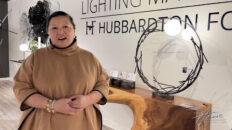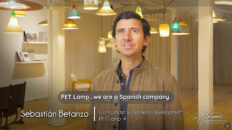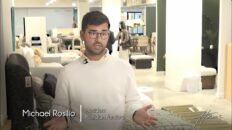Though by no means a hard and fast rule for all Scandinavian cultures and people, if you have ever been to an Ikea, you know that Scandinavians and their interior design have a reputation for being sleek, simple, and cozy.
And, it is not just Swedish meatballs, affordable kitchen appliances, and maze-like cathedrals of multidimensional lighting options that solidifies Scandinavian design as a pillar of post-modern aesthetics.
The three countries that make up the northern European region referred to as “Scandinavia” (Norway, Sweden, and Denmark) are in a unique position to offer the rest of the world some useful examples of what it means to turn empty space into an inspiration.
Lagom and hygge are two Scandinavian originated traditions that give us a little insight into what the Swedes, Danes, and Nords are doing right when it comes to lifestyle and decor.
What is Hygge

Imagine for a moment, a cozy Saturday morning with no obligations, a warm beverage, a good book, (or tv show – depending on your preference), and you in your favorite sweatpants cocooned by homey comfort.
This sense of contentment and comfort is the aim of the Scandinavian design concept of “Hygge”. Pronounced “hue-gah” this originally Danish and Nordic word literally translates to “coziness” or “fun”.
Interior design modeled after hygge takes the best parts of those two translations to transform your home into an oasis of easy comfort.
Hygge is your home in its favorite pair of sweatpants.
What is Lagom
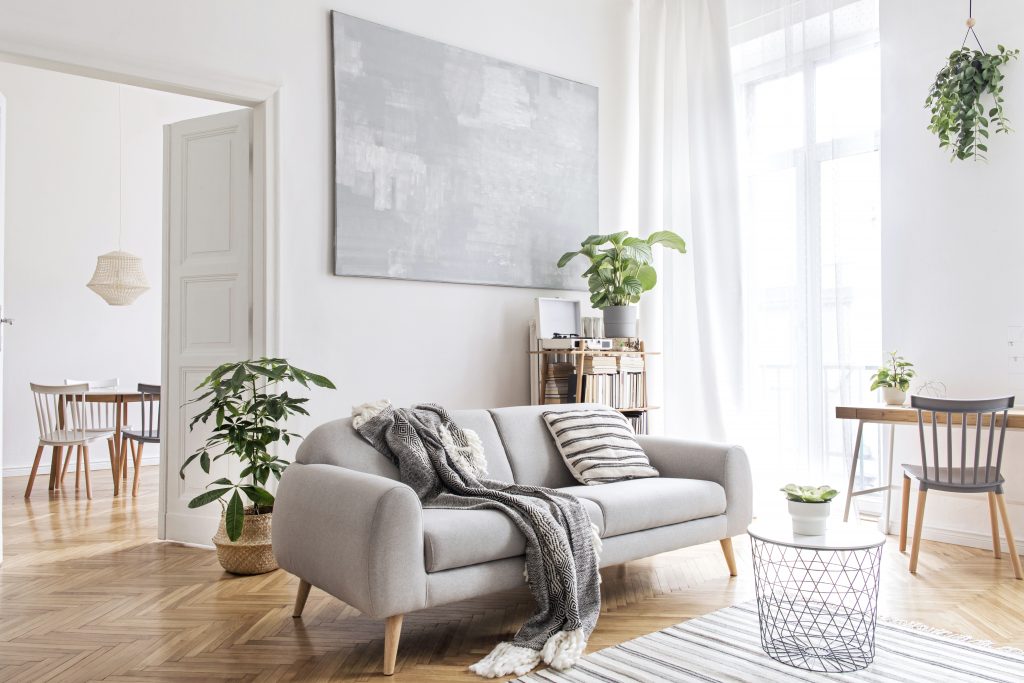
Lagom (pronounced “lah-gum”) is a lifestyle concept that originates from Sweden (yeah – they have way more going for them than their meatballs) that works to inspire tranquility, and creative flow in the home.
If hygge is your home in its sweatpants, lagom is your home in yoga pants posed for an active and rejuvenating stretch. .
More than just a methodology for inspiring comfort-inducing decor, lagom is a tradition that works to incorporate a balance of comfort and productivity into every aspect of your life — not just the design portions.
Lagom – which literally translates to “moderate” – is founded in the notion that less is in fact more, however it does not stop there. A lagom lifestyle and environment would have you taking that “less” and creating “more” with it.
Open space and conscious design pieces work to influence a flow in your environment that should serve as a jumping off point for purposeful and creative endeavors within your day-to-day routine.
Though the more tranquil and passive goal of coziness undertaken by hygge and the active, intentional, and more energetic focus of lagom might seem to look drastically different from one another, the aesthetic goals of lagom and hygge have a fair amount in common. Underneath these commonalities, however is a pull towards two notably different energies.
The decor specifications of hygge and lagom both center primarily around a minimalist style with welcoming colors, comfortable furniture, and sustainable elements that honor the locality of your home.
These elements can come in the form of a variety of different things. You might consider hitting up some local artists for wall decor, foraging through furniture at a second hand store, or perhaps incorporating some flora and fauna from right outside your door.
Lagom too would have you prioritizing intentional selections of decor that bring some emotive value to your space. No impulse buys or useless yardsale steals here.
However, the decor mindset of lagom does not necessarily insist on elements drawn from your house’s particular locality, instead it does insist on putting genuine thought and effort into the pieces you choose to bring into your home.
Natural, Scandinavian elements like yarn, wood, and a soft, easy color pallet are foundational to traditional hygge and lagom; however the terms themselves inspire digging into the elements of your location and lifestyle that bring you comfort and incorporating those things into your home.
Of course, if you find yourself living – out of circumstance or convenience – in a place that doesn’t necessarily jibe with your idea of comfort, exploring the worlds of these two design concepts can be a great creative tool for helping you uncover what sorts of elements are essential to your unique feeling of “home”.
Minimalism and Functionality
In contrast to the maximalist design trend of the early 2000s, both hygge and lagom are all about pairing things down to useful, timeless elements that can be recycled in new homes and fads.
Not only does this help to create a sustained feeling of coziness (important for hygge) and creative, energetic flow (essential to lagom) throughout the course of transitions between houses or design preferences, it is also a convenient way to center your space in a more environmentally friendly manner.
Making use of functional, easily integrated pieces allows you to avoid the necessity of buying something new every time your space or your tastes change. This in turn can reduce your carbon footprint – not to mention save you some money and effort otherwise spent on acquiring new furniture or bits of decor.
Insofar as lagom is concerned, minimalism here also translates into productivity and creative energy.
It’s no secret that – for many of us – a cluttered environment can do a lot to negate productive flows of energy and put a damper on daily goals and tasks around the home and office; This is especially relevant after a year of widespread quarantine and working from home.
Because 2021 is set to continue that home life work flow (at least for the first couple of months) lagom might be hygge’s more productive cousin that many of us would do well to welcome into our homes.
In a lagom environment, furniture and decor have place and purpose.
There are no dust-collecting trinkets or useless, eye catching bits and bobs. Too much “stuff” will inevitably work to lead you astray from a smooth flow of positive energy.
Lagom would have you experimenting with recycled pieces as well as new pieces, however you must be sure that nothing in the space cannot be used. It is also imperative that each element in your lagom inspired space has room around it to breath.
Where hygge prioritizes coziness – which has a connotation that emphasizes a sort of soft closeness – lagom aims to expand a space. This by no means insinuates “emptiness”, but rather room for your furniture and decor choices to speak for themselves and room for you to fill up the space with your own energetic flow.
Experiment with Comforting Colors
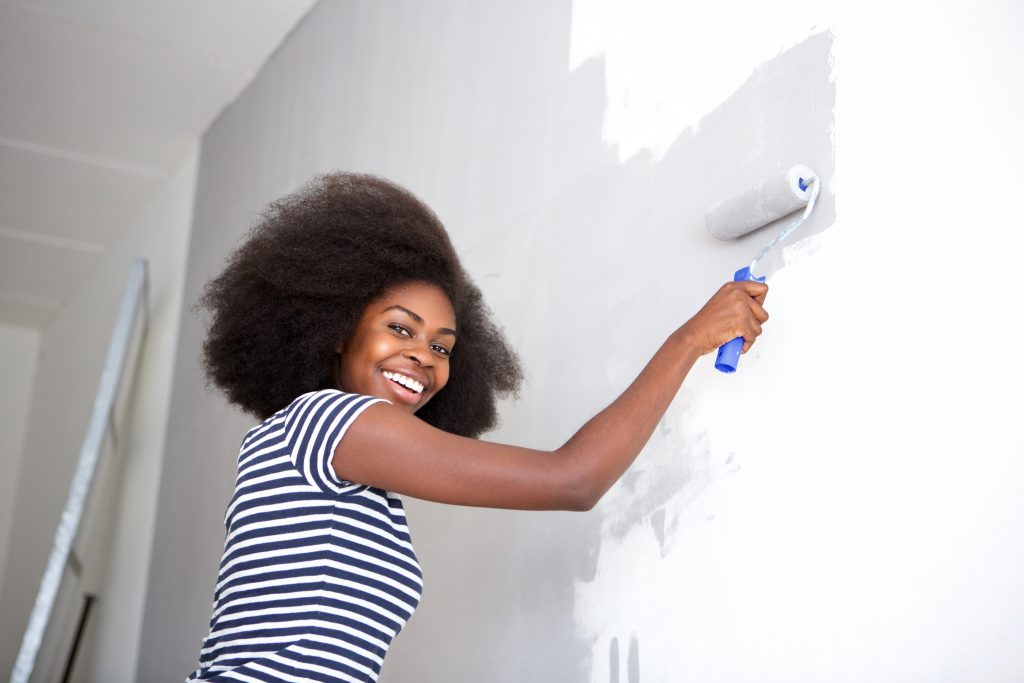
In relation to this minimalistic take on decor, instead of relying on flashy pieces to set the tone of your environment, hygge and lagom would have you experiment with wall colors, and easy modifications of timeless pieces.
Want a new look in the living room? Switch up the color of your accent wall, and re-stain the bookshelf. The biggest elements stay the same, while the feel of the room is modified to give you a slightly different sense of space and flow.
Be mindful of the color combinations you choose for a hygge or lagom inspired room, however; certain colors (for instance a too dark brown) may elicit unintended associations for you and your guests. It is a scientific and cultural certainty that color makes a difference in how people feel in a space.
Colors that we humans can associate with peaceful natural elements have been proven to give us more ease. For instance, a light blue or earthy green can inspire the feeling of a good weather day inside of your home no matter what may be outside your windows.
Contrastingly, shades of black or too-dark gray might function in the exact opposite way, bringing a rainy day inside on the otherwise best of weather days.
A lagom mentality might have you forgo any sort of bright, distracting colors of any shade in preference of muted neutral tones. Whites and soft cream or blue shades are characteristic of the goals of lagom.
You might still choose to play with a pop of color on an accent wall, but a room painted with light, airy colors underlines the concept of expansion that we mentioned before.
Not only do white walls give your space a more expansive feel, they also offer an opportunity to encourage more light in that space. Natural lighting is fundamental to lagom to encourage serotonin and productivity, and sunshine bounces best off of light shades.
Make it Personal
Ultimately, living in a hygge or lagom inspired environment should be a personal mix of new and old, comfort and creativity, and natural and intentional design.
As far as hygge is concerned, (and as we mentioned before), a feeling of “cozy hominess” will look a little bit different for everyone depending on cultural background, geographic locality, and simple personal preference.
Tapping into the concept of hygge can go a long way towards helping you understand what cozy means for you — you might even learn a little something about yourself along the way!
Hygge done right should bring you back to a Saturday morning cocoon of comfort in every room of your home on every day of the week.
Lagom on the other hand can be a catalyst for engaging your body and mind in an unobtrusive creative energy. Unlike hygge, lagom does not stop at your end table or lighting choices but instead should assimilate into every sector of your life from food, friends, work, and even mental health goals.
Lagom is a practice of finding a happy balance between personal and environmental sustainability and easy comfort. To be clear, in this context, personal sustainability means embracing the things that keep you going like healthy eating, supportive company, and the pursual of creative and professional goals.
Nevertheless, you are not limited to one concept or the other when it comes down to it. You might choose to have a hygge inspired bedroom – cozy, warm, and embracing – and a lagom inspired kitchen full of bright, natural light, whole foods, and countertops free of inane clutter.
However you might decide to make use of these Scandinavian design motifs, we are sure that introducing one or both of them into your space can do a lot to make your 2021 ever so slightly more cozy and more personally productive than your 2020.
To get additional inspiration on how to draw out elements of hygge and lagom in your space, be sure to check out the additional design blogs on our site.


